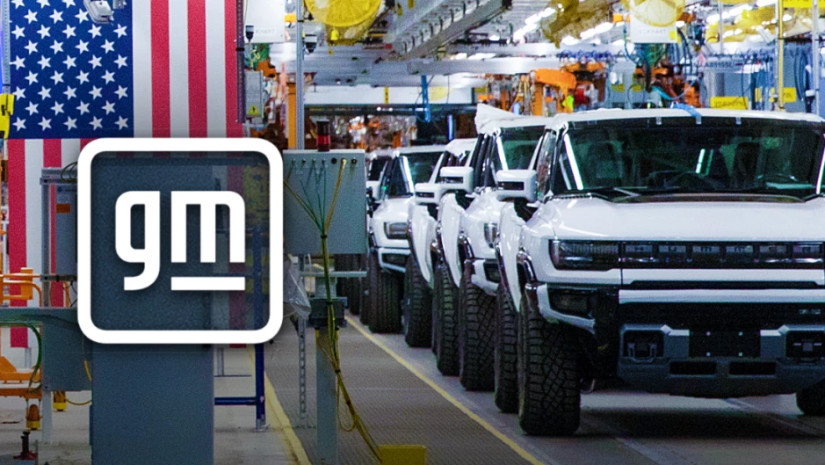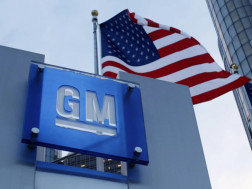General Motors’ earnings grew last quarter, even as the company took a $200 million hit from the first two weeks of a strike by the United Auto Workers union.
The company’s earnings per share rose to $2.28, up from $2.25, in the past quarter. Analysts surveyed by Refinitiv had forecast earnings would decline sharply to $1.88 per share. Investors look closely at that measure when judging financial performance.
GM’s adjusted net income slipped to $3.1 billion from $3.3 billion a year earlier. But the company boosted its earnings per share over the course of the year by buying back its own stock, a controversial tactic critics say artificially inflates companies’ share price without improving a company’s finances.
Revenue rose 5% to $44.1 billion, which also topped forecasts of $43.7 billion.
The company said that the strike cost it $200 million in its first two weeks of the quarter. But those costs have risen since then, with $600 million in costs during the first three weeks of this month, or about $200 million a week. That’s because the UAW has increased the reach of the work stoppage.
The UAW has been on strike against GM as well as rivals Ford and Stellantis since September 15. The targeted strike started with work stoppages at one assembly plant for each of the automakers and 12,700 on strike but has grown since then.
GM has offered the UAW a record contract with the pay scale increasing 23% over the life of the contract that runs through 2028, along with cost-of-living adjustments to protect workers from rising prices and larger contributions to their retirement accounts.
But UAW President Shawn Fain told members on Friday that GM and the other automakers can afford to pay even more and that the union needs to win an even better contract to make up for concessions the union provided in the past when the companies were struggling financially.
The company withdrew its guidance to investors about profits for the full year.
“We made the decision to pull the guidance mainly due to the uncertainty around the strike,” said CFO Paul Jacobson in an interview on CNBC. “We don’t want to speculate where the next plant might be hit or how long it might last.”
He said before the strike the company was performing at the top end of its earlier earnings guidance. He said he believes investors understand the situation with the strike hitting results.
“There’s obviously uncertainty out there. I think the answer is to try to get everybody back to work as quickly as possible, and that’s what we’re committed to do,” he said. “The negotiations get very, very complicated at the table. I’d rather leave those [details] in the room. We’re doing our best to meet the UAW where they’re asking, and where we’re able to do that.”
In a letter to shareholders, GM CEO Mary Barra addressed the strike and the cost of whatever new contract is reached.
“It’s been clear coming out of Covid that wages and benefits across the US economy would need to increase because of inflation and other factors,” Barra wrote. She said the company’s current offer to the union “rewards our team members but does not put our company and their jobs at risk.”
“Clearly, given the industry’s changing pricing and demand outlook and higher labor costs, we have work to do” to hit the company’s stated earnings targets in years ahead, she said. “The work has already begun and I’m confident we will achieve our targets and grow from there.”
The strike is not the only headwind faced by the company. While US profitability is strong, international operations were only slightly better than break even, even though US sales amounted to only 42% of its global sales. The strike is affecting only the company’s US operations.
While US sales were up 21% from a year earlier, supply chain issues, particularly a shortage of computer chips, limited the inventory of its vehicles for sales. But sales in China, which had been GM’s largest market, fell 14%, which the company attributed to greater market competition there. Its Chinese sales are now nearly 20% below US sales.
The company also reported its costs rose nearly $1 billion compared to a year earlier, which it said was primarily driven by EV-related costs, lower pension income and higher warranty costs. It said the mix of vehicles sold also trimmed about $600 million off of its operating income in the quarter compared to a year ago, which it said is due a more normal mix of vehicles with the greater supply of products for sale. And operating income from GM Financial also slipped about $200 million from a year ago in the face of higher interest rates.
But it offset much of those costs with the strong sales and pricing, which together lifted operating income by about $1.2 billion.
There are now more than 40,000 autoworkers on strike, with 9,200 members on strike at GM alone. The union has struck two assembly plants at GM, in Wentzville, Missouri, and Lansing, Michigan, as well as a network of 18 parts and distribution centers nationwide.
The UAW has threatened to expand the strike to GM’s most profitable plant in Arlington, Texas, where it builds the company’s full-size SUVs: the Chevrolet Tahoe and Suburban, the GMC Yukon and the Cadillac Escalade. It has already expanded the strike to the biggest and most profitable plants at Ford and Stellantis but has so far held off on a strike at the Arlington plant. If that plant is shut by a walkout, the financial cost to GM would soar.
Shares of GM rose more than 1% in premarket trading on the better-than-expected results, CNN reports.
















